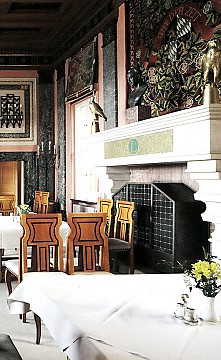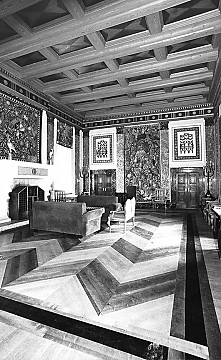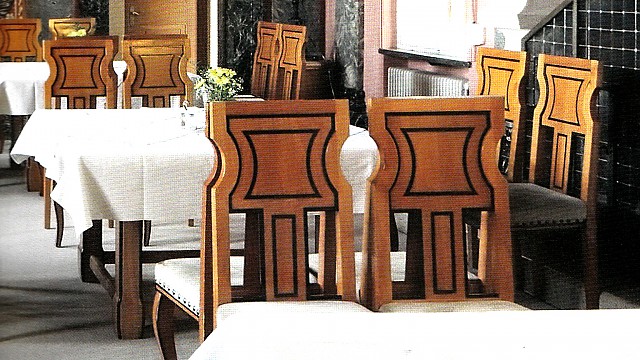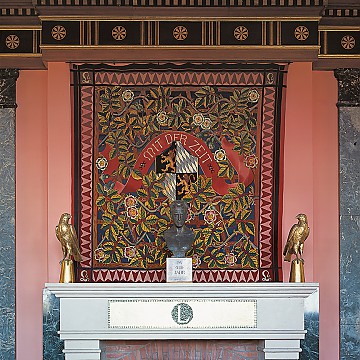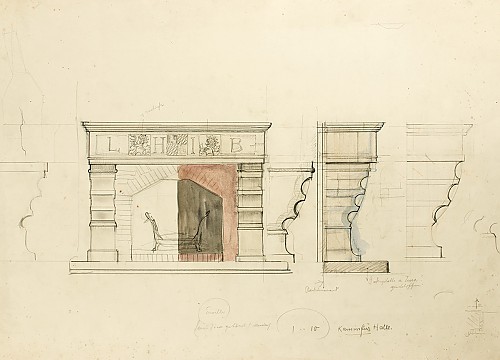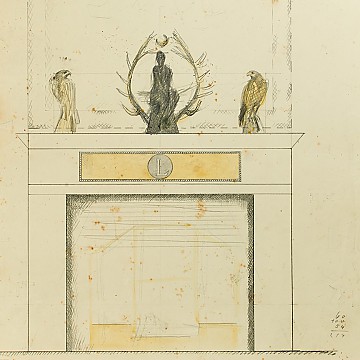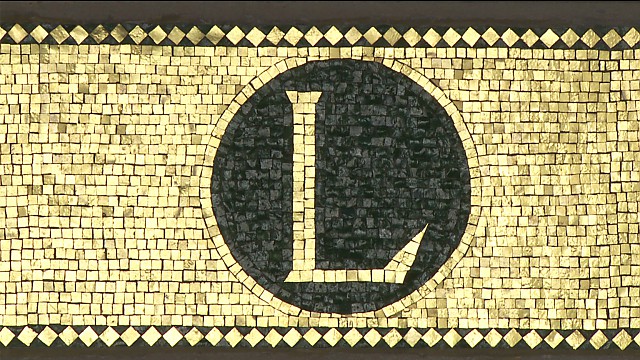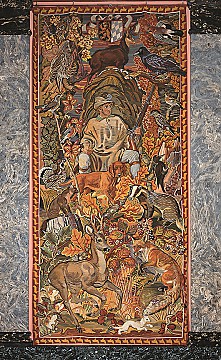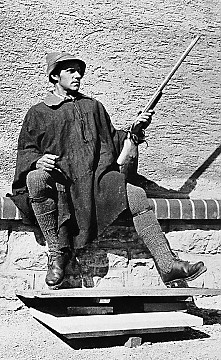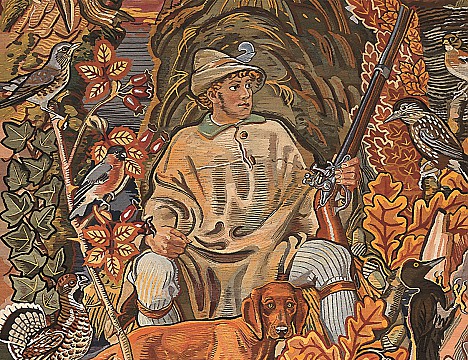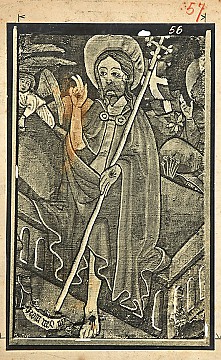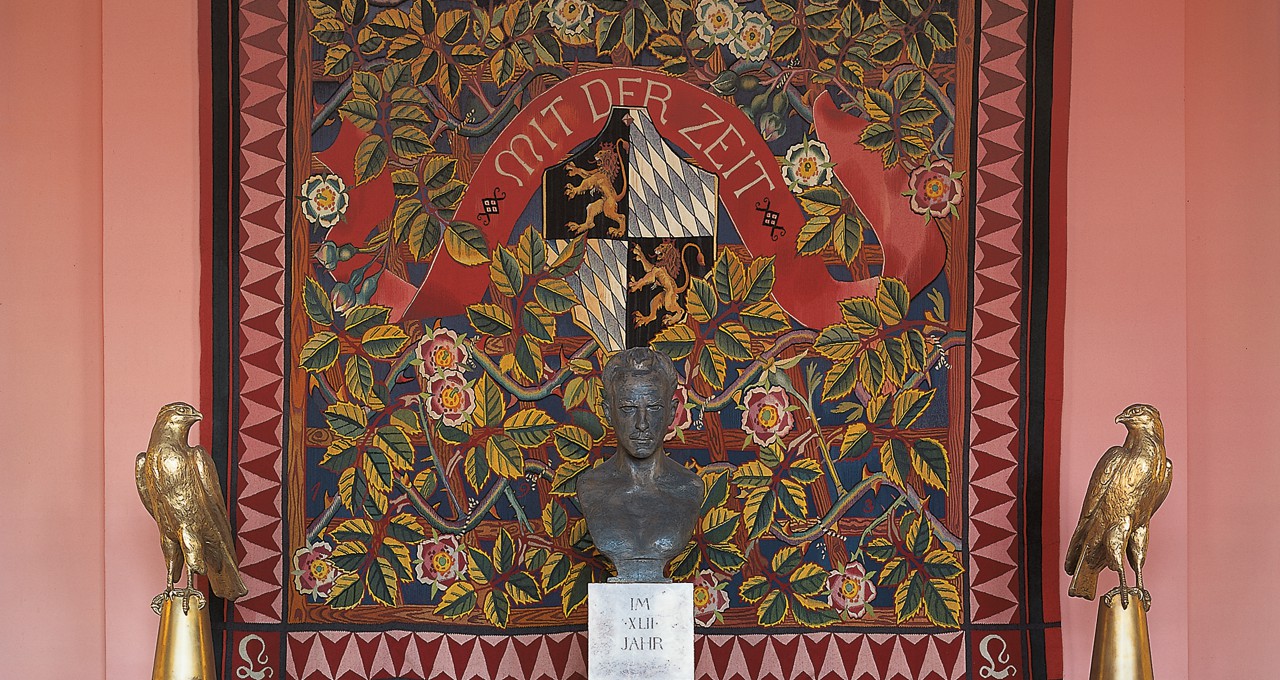
ABOUT
Nowadays, conference guests dine in the former Great Hall, which is today referred to as the Dining Hall. Until the end of the 1970s, the furniture consisted of large sofas and upholstered chairs, which were replaced by inlaid cherry wood chairs and dining tables. The design of the walls and ceiling was inspired by international neoclassical style elements.
The walls and the doorframes are made of chatoyant marble. Blue and green contrasts with the salmon pink of the wall plaster. The top part of the wall, which meets the ceiling, forms a dark brown, wooden frieze with golden ornamentation. Above this is the coffered ceiling made of larch wood with heavy beams.
Special mention should be made of the six precious Gobelin tapestries and the fireplace. In the centre of each gable end is a wall-length Gobelin tapestry on the themes of »spring« and »autumn«. Surrounded by birds, fish and plants, the spring tapestry depicts a nude young woman as a »nymph«. Her gaze rests on a chaffinch in her hand. In the autumn tapestry, a young hunter sits on a rock. The scene here is also dominated by local animals and plants. The workman Jakob Kössler posed as a model for the figure of the hunter whose photograph Attenhuber had taken dressed in an alpine hunting costume. The corners of the room are each accentuated by a wrought-iron, four-flame standing candelabra on a wooden pedestal.
The substantial, open fireplace of limestone with the coat-of-arms tapestry above the ledge is the centrepiece of the Dining Hall. The Gobelin tapestry is adorned with the ducal coat of arms of the House of Wittelsbach (white and blue rhombuses and golden lions on a black background), as well as Luitpold's motto »Mit der Zeit« (»With the times«). All of the castle's Gobelins were made by the Nymphenburg Tapestry Manufactory until 1946. The daylight coming in at different angles changes the appearance of the valuable tapestries; silk, wool and cotton shimmer in various degrees of intensity and create different moods. The artist Friedrich Attenhuber devoted a great deal of creativity to the designs of the tapestries. It was his task to assess the quality of the Gobelin Manufactory in Munich commissioned with producing the designs. The Duke clearly reminded Attenhuber of his responsibility in a letter dated 7 January 1922: »I only placed the order with the tapestry manufactory under the condition that you oversee the work after I have sent them the design. It is therefore your duty, illustrious master, to ensure that I have not wasted hundreds of thousands for rubbish.«
In 1946, the last two quadratic Gobelin tapestries were completed on the south wall above the windows. The works »Three birds with larch branch« on the right-hand side and »Three birds with fir branch« stand out owing to their true-to-detail, realistic depiction.
